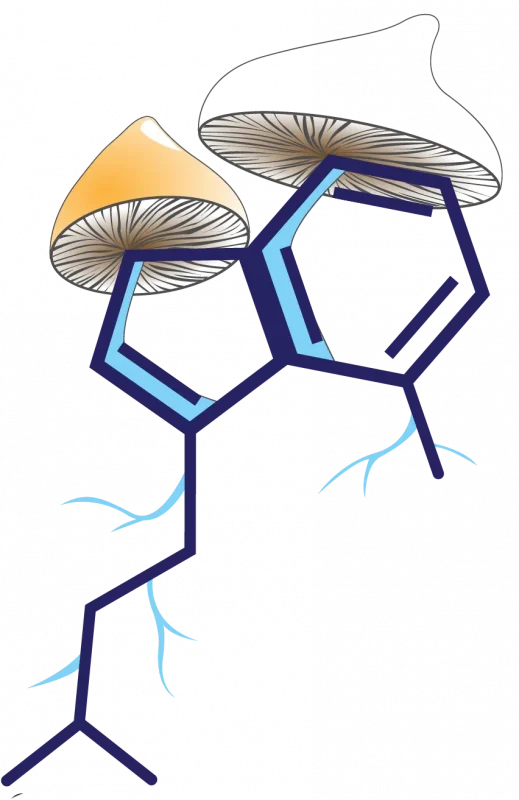Decoding the Brain on Psilocybin: What Neuroimaging Tells Us
In the quest to understand the enigmatic workings of the human mind, modern science has turned its gaze towards a realm once relegated to the fringes of research: the psychedelic experience. Psilocybin, the psychoactive compound found in magic mushrooms, has emerged as a key subject in this pursuit. Armed with advanced neuroimaging techniques such as functional Magnetic Resonance Imaging (fMRI) and Positron Emission Tomography (PET) scans, researchers are unveiling the profound and complex ways in which psilocybin interacts with the brain. This exploration into the brain on psilocybin is not just rewriting our understanding of consciousness but also illuminating new pathways for treating mental health disorders.
One of the most striking revelations from neuroimaging studies is the dramatic increase in global brain connectivity under the influence of psilocybin. fMRI scans, which measure brain activity by detecting changes associated with blood flow, reveal that psilocybin induces a state where different regions of the brain communicate with each other more freely and extensively. This enhanced connectivity is often visualized as a symphony of brain regions “talking” to each other, far beyond their usual conversations. This phenomenon explains the profound and often transformative experiences reported by individuals, ranging from vivid visual hallucinations to deep emotional and philosophical insights.
Dissolving the Default Mode Network
At the heart of these discoveries is the role of the Default Mode Network (DMN), a network of brain regions that is particularly active during rest, introspection, and self-referential thoughts. Neuroimaging has shown that psilocybin significantly reduces the activity of the DMN, leading to what is often described as the dissolution of the ego. This reduction in DMN activity is associated with the feeling of oneness with the universe or the loss of personal identity, a hallmark of the psychedelic experience. The DMN is also implicated in conditions such as depression and anxiety, and its temporary deactivation may offer insights into why psilocybin has shown promise as a treatment for these disorders.
Rewiring the Brain’s Pathways
Beyond the immediate effects of psilocybin on brain connectivity and the DMN, neuroimaging studies suggest that psilocybin may facilitate a longer-term rewiring of the brain’s pathways. This neural plasticity, the brain’s ability to form new connections, offers a potential mechanism for the lasting benefits observed in clinical trials for depression, PTSD, and addiction. PET scans, which can show the distribution of neurotransmitters, reveal changes in the serotonin system, further supporting the role of psilocybin in promoting neural flexibility and growth.
Implications for Consciousness and Mental Health
The insights gained from neuroimaging studies of the brain on psilocybin are profound. They challenge traditional views of consciousness and the rigid structures of thought that characterize mental health disorders. By revealing the brain’s capacity for enhanced connectivity and flexibility, psilocybin opens the door to novel therapeutic approaches that go beyond symptom management to address the root causes of mental health issues.
Conclusion
As we decode the brain on psilocybin through the lens of neuroimaging, we are uncovering more than just the mechanisms of a psychedelic substance. We are delving into the deepest mysteries of the mind, consciousness, and the potential for healing inherent in the human brain. These discoveries are paving the way for a future where mental health treatment is not only about alleviating symptoms but fundamentally transforming the brain’s patterns and pathways for a more holistic and enduring well-being. The journey of understanding the brain on psilocybin is just beginning, but it promises to revolutionize our approach to mental health, consciousness, and the human experience itself.
FAQ Section: Decoding the Brain on Psilocybin
Q1: What does psilocybin do to the brain?
A1: Psilocybin increases global brain connectivity, allowing different regions to communicate more freely. It significantly reduces activity in the Default Mode Network (DMN), associated with self-referential thoughts and ego, and promotes neural plasticity, enhancing the brain’s ability to form new connections.
Q2: How do neuroimaging techniques like fMRI and PET scans contribute to our understanding of psilocybin’s effects?
A2: fMRI and PET scans provide detailed images of the brain’s activity and neurotransmitter distribution, respectively. These techniques allow researchers to observe changes in brain connectivity, activity patterns, and serotonin system alterations under the influence of psilocybin, offering insights into its mechanisms and effects.
Q3: Can psilocybin lead to lasting changes in the brain?
A3: Yes, research suggests that psilocybin can induce long-term neural plasticity, meaning it can help the brain form new connections. This potential for “rewiring” the brain may contribute to the lasting benefits observed in the treatment of depression, anxiety, and other mental health conditions.
Q4: What is the Default Mode Network, and why is it important in psilocybin research?
A4: The Default Mode Network (DMN) is a network of brain regions active during rest and introspection. It’s implicated in self-referential thoughts and the sense of ego. Psilocybin’s ability to reduce DMN activity is believed to underlie experiences of ego dissolution and has significant implications for treating mental health disorders where the DMN is overly active.
Q5: How does psilocybin affect mental health disorders according to neuroimaging studies?
A5: Neuroimaging studies show that psilocybin can alter brain connectivity and reduce DMN activity, which may alleviate symptoms of mental health disorders like depression and anxiety. By promoting neural plasticity, psilocybin also offers new pathways for therapeutic intervention, potentially leading to sustained improvement.
